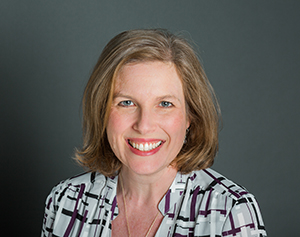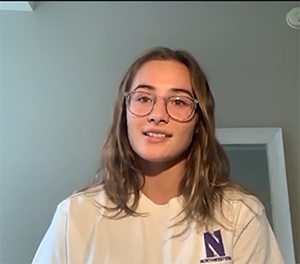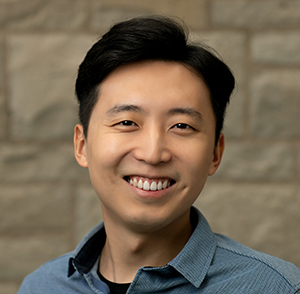Paper on Flipping Probability Classroom Wins Prize
Online education did not start in 2020, but for instructors faced with the prospect of adapting well-established in-person course offerings that summer, virtual classrooms required a fresh approach to  familiar content. For Professor Jill Wilson, driving student engagement with the material in her IEMS 202 Probability course demanded more than business-as-usual through a webcam. Wilson’s solution was to flip the classroom, delivering lectures asynchronously while deepening students’ understanding of that content via synchronous Q&A sessions and discussion groups addressing real-world case studies on core concepts. Students in Wilson’s Probability course responded very positively, and so did the Institute of Industrial and Systems Engineers (IISE), awarding Wilson and her collaborators, David Morton, Eojin Han, and Eloise Chudik, the Best Paper Award in the Engineering Education Track at this year’s IISE Annual Conference.
familiar content. For Professor Jill Wilson, driving student engagement with the material in her IEMS 202 Probability course demanded more than business-as-usual through a webcam. Wilson’s solution was to flip the classroom, delivering lectures asynchronously while deepening students’ understanding of that content via synchronous Q&A sessions and discussion groups addressing real-world case studies on core concepts. Students in Wilson’s Probability course responded very positively, and so did the Institute of Industrial and Systems Engineers (IISE), awarding Wilson and her collaborators, David Morton, Eojin Han, and Eloise Chudik, the Best Paper Award in the Engineering Education Track at this year’s IISE Annual Conference.
A flipped classroom, with asynchronous lectures coupled with synchronous group and classroom discussions, can be used to address a range of course-specific stumbling blocks, and Wilson had made use of it before in Northwestern Engineering’s Master of Engineering Management program. “Back then we had more part-time students driving from the suburbs after work—sometimes more than an hour commute—to sit in a three-hour class” said Wilson. “That course is also a dense, quantitative course, and the material was hard to absorb in three-hour lectures. So I moved lecture content to asynchronous videos and spent class time on Q&A and hands-on problem solving.” Undergraduates hadn’t faced similar scheduling pressures, requiring such an adjustment, until Northwestern’s emergency shift to remote instruction in the spring quarter of 2020. According to Wilson, “Sitting on Zoom for many hours a day is really hard, and it becomes difficult to focus. I really wanted to give students some control over their learning, and allow them to absorb the information at the times and pace that worked best for them.” The closing of Northwestern’s physical campus to first- and second-year students in fall 2020 also meant that many students would be joining class from different time zones, making additional synchronous sessions difficult to schedule.
With these concerns in mind, Wilson redesigned IEMS 202 to ensure students would not get lost in the shuffle of online lectures, where a student can easily remain “anonymous” and not engaged. Course topics were broken down into nine modules, each comprising an initial asynchronous lecture followed by analysis of a case study, first individually, then in a small group, and finally with the entire class. Asynchronous lectures, lasting about 30-100 minutes in total per module, were further broken down into 10-12 minute segments, captioned, and edited into playlists to ensure that students could fully focus on individual concepts. A series of checkout questions at the end of each segment helped to identify areas  meriting further explanation during a synchronous class. Eloise (Ella) Chudik, an undergraduate IE student who had completed IEMS 202 the prior year, handled the captioning and editing for all of the asynchronous lectures, and excelled to the point her role was expanded as planning went on. “I had such a great resource in Ella that I wanted to use her beyond just captioning and editing videos,” Wilson said. “This is where we came up with the idea for Probability Stories, and for her to assist Eojin with identifying case study topics.” Alongside her editing work, Chudik developed Probability Stories, a series of short supplemental videos discussing use of a module’s ideas in popular culture. Ella Chudik’s work was supported by the Ken Porrello and Sherry McFall Fellowship, one of nine summer 2020 fellowships funded by the Advisory Board of Northwestern’s IEMS Department.
meriting further explanation during a synchronous class. Eloise (Ella) Chudik, an undergraduate IE student who had completed IEMS 202 the prior year, handled the captioning and editing for all of the asynchronous lectures, and excelled to the point her role was expanded as planning went on. “I had such a great resource in Ella that I wanted to use her beyond just captioning and editing videos,” Wilson said. “This is where we came up with the idea for Probability Stories, and for her to assist Eojin with identifying case study topics.” Alongside her editing work, Chudik developed Probability Stories, a series of short supplemental videos discussing use of a module’s ideas in popular culture. Ella Chudik’s work was supported by the Ken Porrello and Sherry McFall Fellowship, one of nine summer 2020 fellowships funded by the Advisory Board of Northwestern’s IEMS Department.
Once each student completed their asynchronous assignments for each module, the class moved on to examining a series of specially-designed case studies. Wilson, in consultation with Chudik and Eojin Han–then a Northwestern IEMS doctoral student and now on the faculty at Southern Methodist University–chose real-world issues directly relevant to the lives of students, such as COVID-19 testing for the module on conditional probability and renewable energy generation for the module on continuous random variables. The point, Wilson notes, was to move beyond the typical coin-flipping, dice-rolling, and card-drawing examples of a probability course and encourage students to think more deeply about the applications of probability in the real world. Individual, small group, and class discussions continually helped to identify the most challenging concepts for the students, while fostering a closer and more inclusive atmosphere than would be typical in most remote courses. As the department’s Director of Undergraduate Studies, this aspect was of particular importance to Wilson. Helping potential IE majors to begin building a sense of community they could rely on in their later studies was one of the main goals of the flipped classroom, and will hopefully pay dividends in the coming years.
The results of the course bore out the effort initiated in the summer of 2020. While direct comparisons are difficult, Wilson and her team noted that “fully remote delivery of the class yielded no  obvious loss in learning or class performance,” with course topics in need of further discussion in synchronous sessions broadly matching up with those in previous, in-person offerings of the course. Student feedback was also positive, indicating that flipped approach had some definite strengths beyond expediency. Individual students noted an appreciation for the initial asynchronous, more self-paced format as well as the chance to talk through their work with their peers on a regular and structured basis. In an end-of-course survey, the students evaluated “…the usefulness of lab/discussion section… in learning and applying course material” nearly 50% higher than in the previous year’s offering.
obvious loss in learning or class performance,” with course topics in need of further discussion in synchronous sessions broadly matching up with those in previous, in-person offerings of the course. Student feedback was also positive, indicating that flipped approach had some definite strengths beyond expediency. Individual students noted an appreciation for the initial asynchronous, more self-paced format as well as the chance to talk through their work with their peers on a regular and structured basis. In an end-of-course survey, the students evaluated “…the usefulness of lab/discussion section… in learning and applying course material” nearly 50% higher than in the previous year’s offering.
For Wilson, who had designed the course from the beginning to be relevant beyond 2020, the outcome from last fall’s term was extremely encouraging. Responding to a call for papers from IISE, she decided to submit her design. “The class had turned out well, was going well in fall, and it seemed a shame not to share the success—particularly because I hadn’t seen anything much like this before.” IISE agreed, and Wilson’s, Han’s, and Chudik’s submission with department chair David Morton won the Best Paper Award in the Engineering Education Track at the 2021 IISE Annual Conference. Wilson’s hope was to document a successful course modification in light of specific circumstances, but also to share an approach that could have significant impact going forward. While COVID-19 content was included in some case studies, this was intentionally limited, in part to ensure the continued relevance of the course going forward. For her own part, Wilson plans to retain the flipped approach in the future, with some modifications. “As we move into next year, I’m still thinking through how to have more face-to-face time with students, without losing the benefits of working in small groups on case studies. I think I’ll return to some real time lecture, but will perhaps still use some recorded material to make room for class activities.” While she notes that flipped classrooms may not be right for every course, and require a significant initial time investment, all indications point to a flipped IEMS 202 Probability course being a strong success in innovative teaching, designed and implemented during a challenging pandemic.
